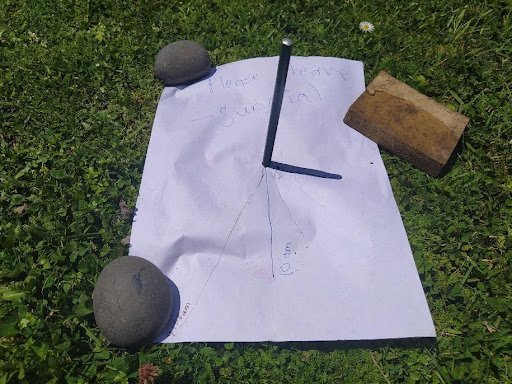Sep 29: Make a Bug Hotel
Make a Bug Hotel

Below are some talking points and activities to pass the time, all relating to today’s story.
Talking points
Discuss the ideas presented in the story with your family—at home or over video conferencing. Find ways to involve as many people as possible, especially those who you know are isolated by the lock-down.
- A “public-private partnership” is when a government or council-run group works with a group of citizens or a privately-run business. They both put in money and time to achieve a common goal. What might this be a good model? Can you think of any potential pitfalls?
- The island includes a variety of planting and landscape. There is “plantation forest, farmland, native bush and thick scrub, folded into high peaks and deep valleys and pocked with volcanic caves.” Can you picture each of these? For example, what trees might be in plantation forest? What is the difference between native bush and thick scrub?
- By the time rats had been on Great Mercury Island for about 700 years, DOC described them as being at “plague proportions.” Did you know that rats could cause these kinds of problems: “Rats were jumping into beds with the farm manager’s children, eating through the wiring in the bathroom and wreaking structural damage on farm buildings”?
- Two of the photos show conservation dogs at work on the island. Did you know there are dogs specially trained to help DOC workers? Some help find pest animals, others help find endangered species. What kind of dogs do you think are the best at this work, and what kind of training might they be given?
- The Mercury Island tusked wētā is described as “cryptic and carnivorous.” What do we learn about it from this description? This species is one of the rarest invertebrates in the world – why do you think it isn’t more famous?
Activity: Make a Bug Hotel
Do your own bit of backyard conservation by making a snug, warm home for some local invertebrates. All you need is a bottle, some recycling-bin material and some sticks!
You will need:
- An empty milk bottle or drink bottle
- Scissors
- About 40cm of String or rope
- A variety of recycling-bin material – corrugated card, newspaper or paper
- A variety of garden materials – small sticks, hay or dried grass, pine cones, hollow dried stems

Step One: Gather your foraged materials. We found sheep’s fleece, pampas grass, hay, a cardboard kitchen towel roll (which we rolled tightly securely) walnut shells, newspaper, twigs and bark.

Step Two: Cut the ends off a bottle. You can leave one end closed or cut off both ends. Cut some slits in the side and poke the string through. Tie it securely. The other end of the string will tie the hotel onto a branch in a warm location.

Step Three: Stack materials into the bottle. It should be fairly tightly packed but there will be plenty of nooks and crannies between the materials that insects can happily use. Tie the hotel onto a branch in a warm, not hot location. We tied ours onto a tree branch, about 1.5m from the ground.
After a week, visit your bug hotel and see if it has any visitors.
Try putting one up in a different place – do insects seem to prefer a hotel on the ground, or off the ground? How much shade, light and warmth do they seem to prefer?
















